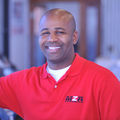I fear not the man who has practiced 10,000 kicks once, but I fear the man who has practiced one kick 10,000 times. —Bruce Lee
Mastery is something that often falls by the wayside in favor of variety.
Take our role as educators, teachers, and coaches for our fitness clients. Each day, we help them discover new ways their bodies can move, with the goal of improving their lives.
The longer we work with individual clients, the more likely we are to feel compelled to keep digging deeper and deeper into our “bag of tricks” to keep them interested and engaged. While variety adds spice to a program, a program that is all variety and no mastery can interfere with results and amplify injury potential.
With so many different exercises, pieces of equipment and programming dogmas, it’s easy to forget about the fundamentals of movement. It’s almost as if we become afraid to slow down and do things better, as opposed to speeding things up and doing them more.
After all, clients want a BURN! They judge training quality by their residual soreness and all they have to do is turn on the television to see another “celebrity” trainer showing them how to do a “fat-shredding” 60-minute workout with hundreds of different exercises performed at blinding intensity.
In the last 15 years I’ve spent as a health and fitness professional, however, I’ve discovered there is tremendous power in slowing things down and reintroducing a client’s brain to his or her own body.
Through a process of evolution from being a butt-kicking “cheerleader” to a coach who has learned to truly care for people, I’ve retained a majority of my clients since I began training. Although these clients are 15 years older than when we started, they are the strongest, leanest and most mobile they have ever been.
This made me realize that a health and fitness professional who is willing to step off the high-speed treadmill for a moment to coach and educate more effectively is one who will empower his or her clients for life.
The human body is an amazing machine, and when it works the way it is supposed to, that machine gets really strong, mobile and lean. Take a break from counting reps and setting timers and re-focus on COACHING clients to mastery on the three simple, “familiar” moves described below. As you’ll see, there is always an opportunity to coach and educate.
1. The Push-up
Step 1: Begin in an all-fours position.
- Position the shoulders directly over the wrists.
- Extend the toes as they make contact with the floor.
- Without lifting the hips, bring the knees off of the floor so the legs are straight.
Step 2: Holding this position:
Toes:
- Engage the floor with the toes, engaging the calf muscles.
Legs/hips:
- Simultaneously tighten the glute and quadriceps muscles (think about pulling the quadriceps muscles up into the hips.)
Torso:
- Engage the pelvic floor by squeezing the Kegel muscles as if preventing going to the bathroom.
- Make the abdominals as tight as possible.
Shoulders:
- Pull the shoulders down and away from the ears by “tightening” the armpits.
Hands:
- Dig the hands into the floor as if you are clinging to a cliff wall.
Hold this position of tension for 10 seconds, and then return to the all-fours position.
Step 3: Return to the tension position.
- Engaging the floor with the hands, “pull” yourself toward the floor, chest leading before the hips. Maintain the tension from step 2 all throughout the body.
- As you pull yourself toward the floor, take a controlled, deep breath into the belly.
- Descend toward the floor for a count of three to five seconds, maintaining the tension from step 2 throughout the entire body.
Step 4: Once the chest is a few inches from the floor:
- If you are currently unable to return to a full push-up position, allow the chest to contact the floor, engage the knees into the floor, exhale your breath under pressure (with a hissing sound) and return to the all-fours position; repeat.
- If you are able to do a full push-up, grip the floor with the hands as hard as possible.
- Begin to exhale the breath, maintaining tension and pressure in the midsection.
- Without moving the hands, think as if you are turning doorknobs with them. The elbows will move toward the body.
- Squeeze the armpits as hard as you can, maintaining the same tension from step 2 throughout the entire body.
- Once you have returned to the top of the movement, take in another deep belly breath and repeat.
2. The Squat
Step 1: Begin by facing a wall with hips shoulder-width apart, toes pointed slightly outward, roughly 2 to 4 inches away from the wall.
- Bring the arms in front of the body; reach toward the floor with the hands nearly touching.
Step 2: Maintaining this position:
Head and neck:
- Retract the head and neck, as if you are holding a tennis ball under the chin.
Shoulders:
- Tighten the armpits, pulling the shoulders down and away from the ears.
- Keep the arms straight as they reach forcefully toward the floor; begin with the hands on the inside of the thighs.
- Begin to take in a deep belly breath.
Step 3: Maintaining the position above, begin to descend toward the floor.
Hips/torso:
- Engaging the hip flexors, “pull” the body toward the floor.
- Hips should tilt anteriorly as the knees bend.
Knees:
- Knees should move only slightly toward the wall without making contact.
Feet/toes:
- Toes should “fan out” on the floor, maintaining pressure through the center of the foot.
Continue to draw in a deep belly breath under pressure during the entire descent.
Step 4: Once a terminal depth is reached (either by touching the floor, the nose touching the wall, or the point at which balance cannot be maintained):
- Hold for a count of five (exhale/re-inhale, if necessary).
Step 5: Begin to exhale under pressure.
Toes/feet:
- Try to “split the floor” with the feet; attempt to abduct the hips while keeping the feet planted.
- Grip the floor with the toes during the ascent.
Hips/torso:
- Maintain tension through the quadriceps and glute muscles.
Shoulders:
- Keep reaching the hands toward the floor to keep the armpits tight and the shoulders down and away from the ears.
Head and neck:
- Keep the head forward and the neck retracted, as if you are holding a tennis ball underneath the chin.
Step 6: Once you have returned to the top of the movement, take in a deep belly breath and repeat.
- If you were able to touch the floor with the toes a few inches from the wall, move toward the wall until the toes are able to touch.
- If you were unable to reach a depth of 90 degrees of knee flexion, back up so your toes are 6 to 8 inches away from the wall and perform the movement with a 10-second hold at the bottom, instead of a five-second hold.
3. Breathing
Step 1: Stand with the feet shoulder-width apart, the shoulders down and away from the ears, the hands across the belly, touching the bellybutton area, and the mouth closed.
Step 2: Maintaining this position:
- Begin to draw in air through the nose, witnessing the expansion of the midsection (seen by movement of the hands).
- An attempt should be made to “breathe into the bottom of the pelvis.”
- The shoulders and/or chest should not elevate.
Step 3: After a five-second inhale, using either the nose or the mouth, exhale for a count of five while witnessing a depression of the midsection.
- Repeat steps 2 and 3 five times.
Step 4: Take a drink of water, but do not swallow it.
- Begin to perform low-intensity (aerobic heart rate) activities (jogging, skipping, shuffling, light calisthenics, etc.) for two to three minutes.
- Breathing must be done with the mechanics described above (with an altered cadence) while maintaining a mouthful of water.
- After time has expired, swallow or spit out the water.
- Repeat the activity one to three more times.
(This requires breathing to be performed through the nose and applies a greater demand for the diaphragm to be active.)
- Begin to work up to being able to repeat the water drill for an extended period of time (20+ minutes) while doing low-intensity aerobic work.
Too often, “familiar” activities are rushed, irresponsibly progressed or terminally regressed. By slowing down and challenging clients to master the basics, you increase their ability to get results and decrease the likelihood they will get injured.




 by
by 









 by
by